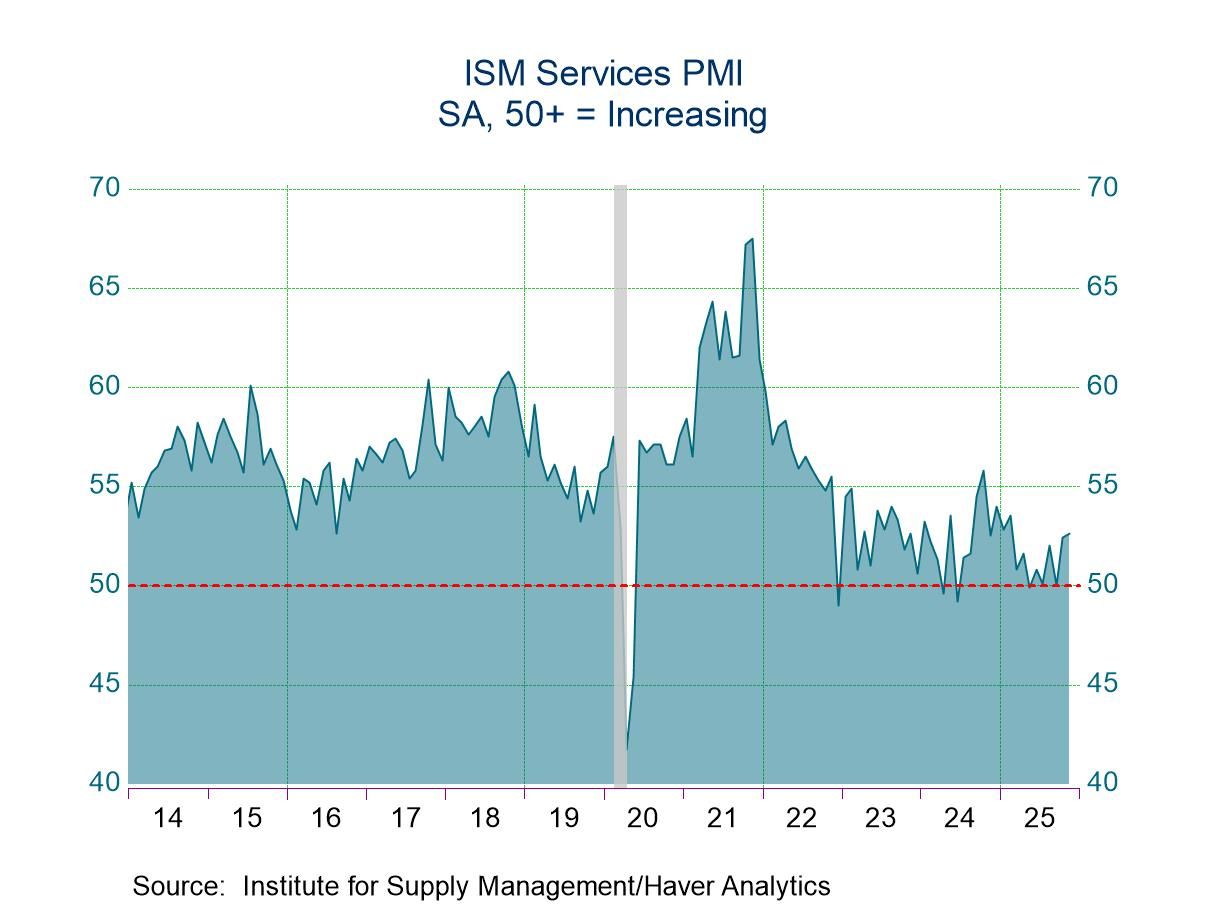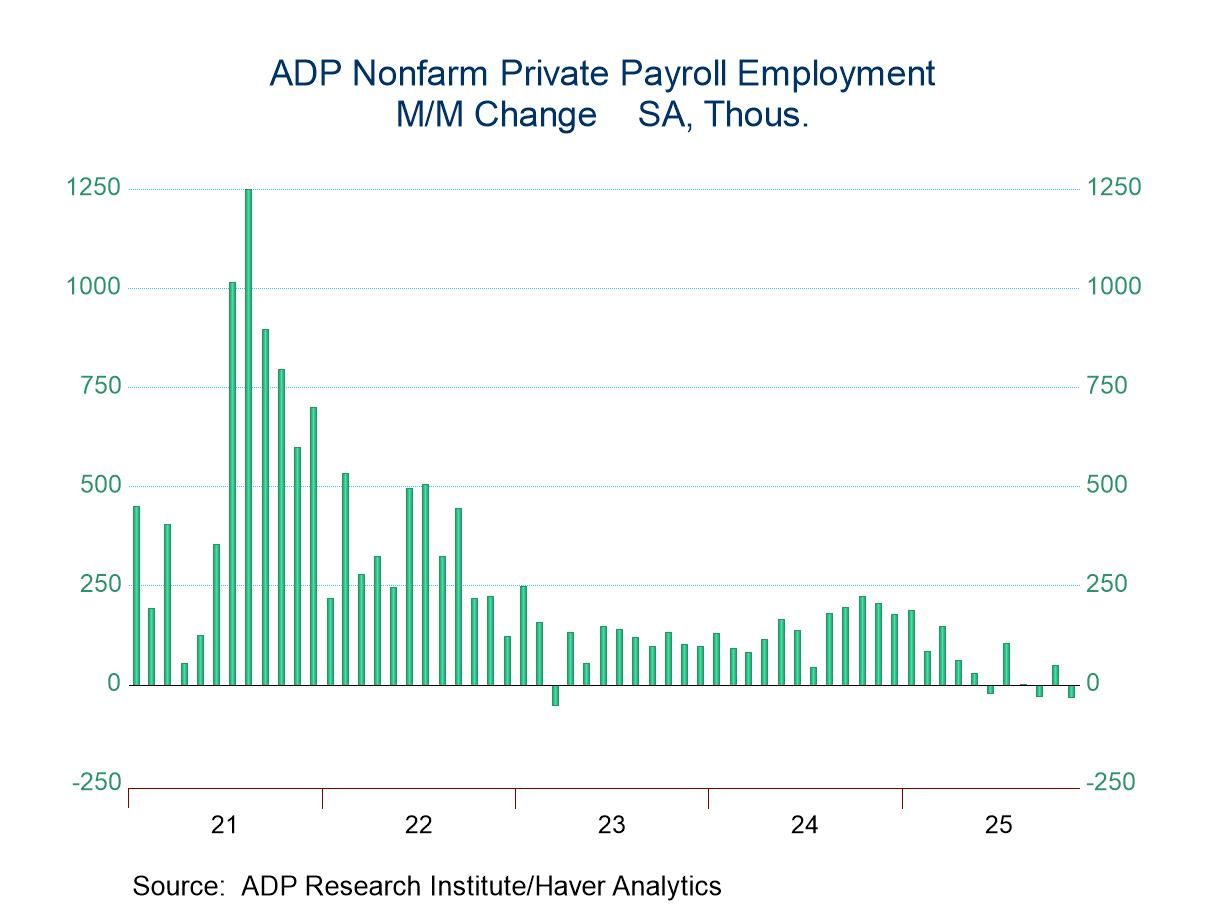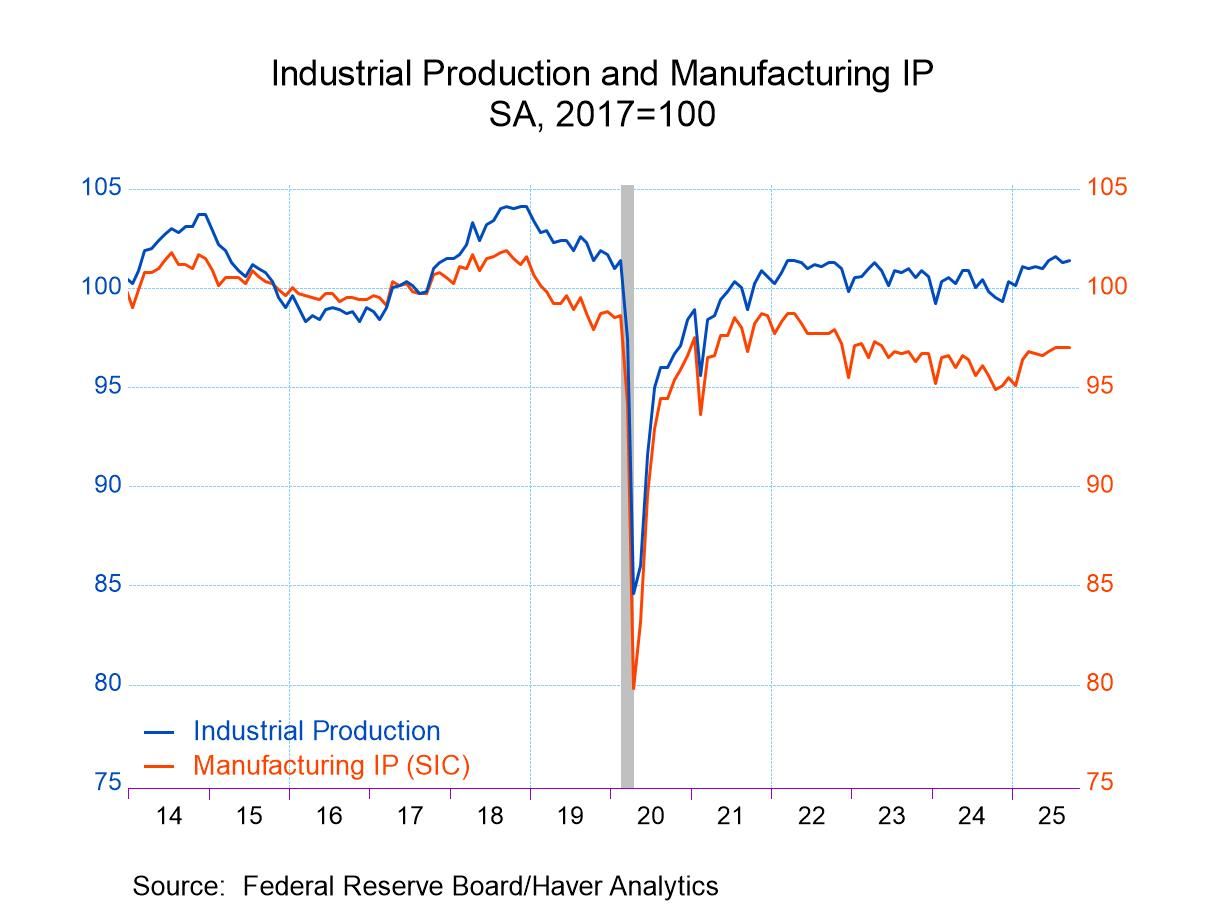New Orders for Durable Goods: Firm Reading for May
Summary
- Fueled by robust orders for aircraft, but also respectable elsewhere.
- Demand for capital goods holding up well.


New orders for durable goods surged 16.4% in May, led by a striking advance of 182.9% in bookings for new aircraft. Published figures by Boeing (303 new aircraft bookings) led analysts to expect strong results, but the outcome far exceeded expectations (Action Economics showed a median estimate of 9.0%). The advance in the headline number was the strongest in more than 10 years and the third firmest on record (data started 1992). The jump in May, combined with another strong month for aircraft in March, pulled the 6-month trend well above the previous range (chart, left).
While the volatile aircraft component accounted for most of the positive surprise, orders elsewhere were favorable as well, as shown by an increase of 0.5% excluding transportation – one of the better readings in the past three years. This increase also was notable because of its breadth, with all six components other than aircraft posting gains. Bookings for computers and electronics stood out with growth of 1.5%, but all areas were at least respectable. The May increase excluding transportation, while welcome, did little to alter the underlying trend, as the 6-month average increase remained within the narrow range seen in the past two to three years (chart, right).
Unfilled orders merit attention. If new orders were to soften, a sizeable backlog could keep manufacturers operating at normal levels for a time. The headline figure on unfilled orders was robust (3.4%), but as with new orders, the aircraft component dominated this reading; unfilled orders were unchanged excluding transportation. From a longer-term perspective, unfilled orders were strong from late 2020 through 2022 as the economy recovered from the pandemic, but they inched lower during 2023 and most of 2024. Backlogs showed hints of improvement in late 2024 and early this year, but 6-month average growth is now showing no change excluding transportation (chart, left).
The report on orders for durable goods includes a series that carries significance in the current environment. Many economic forecasts for 2025 involve weak investment spending by businesses because of policy uncertainty associated with tariffs. The series on bookings for nondefense capital goods other than aircraft provides insight into this crucial sector (chart, right).
Interestingly, capital spending seems to be holding up well. The Q1 GDP report showed strong growth in equipment spending by businesses (23.7%), and today’s report on durable goods orders offered encouraging news with growth of 1.7 percent in orders for nondefense capital goods other than aircraft. This increase, along with strong results in January, has pulled 6-month average growth into positive territory, a notable improvement from negative readings seen during most of 2023 and 2024.
Manufacturers’ orders and shipments of durable and nondurable goods, along with unfilled orders and inventories, are compiled by the U.S. Census Bureau. They are available in Haver’s USECON database. The Action Economics forecast data are in the AS1REPNA database.


Michael J. Moran
AuthorMore in Author Profile »Before joining Haver Analytics in 2025, Michael J. Moran was the chief economist of Daiwa Capital Markets America Inc. He was responsible for preparing the firm’s economic forecast and interest rate outlook. He traveled frequently to visit the clients of Daiwa Capital Markets and wrote weekly economic commentary. Mr. Moran also was involved in the flux of financial markets, as he spent a portion of each day on Daiwa’s trading floor interpreting economic statistics and Federal Reserve activity for traders and salespeople. Mr. Moran is quoted frequently in the financial press, and he appears regularly on cable news shows. He also has published articles in several journals and periodicals. Before joining Daiwa Capital Markets America, Mr. Moran worked as an economist at the Federal Reserve Board in Washington, D.C. where he analyzed a broad range of issues dealing with the financial sector of the economy and regularly briefed the Board of Governors. He was on the faculty of Pennsylvania State University from 1979 to 1980 and taught on a part-time basis at George Washington University from 1980 to 1987.
Mr. Moran received his Ph.D. in economics from Pennsylvania State University in 1980 and a B.S. in business administration from the University of Bridgeport in 1975. He was a CFA charter holder from 2002 until 2016.






